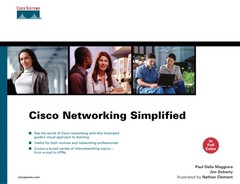At some point, everyone involved with networking comes across a reference to the Open System Interconnection (OSI) seven-layer model. What is the seven-layer model, and why is it relevant?
The OSI seven-layer model describes the functions for computers to communicate with each other. The International Organization for Standardization (ISO) published this model in 1984 to describe a layered approach for providing network services using a reference set of protocols called OSI. The basis of the definition is that each of the seven layers has a particular function it must perform, and each layer needs to know how to communicate with only the layers immediately above and below it.
At the time of the definition of the OSI networking model, there was little standardization among network equipment manufacturers. Customers generally had to standardize on a particular vendor’s hardware and software to have devices communicate with each other.
As a result of the ISO’s and other standardization efforts, networking customers can mix and match hardware when running open standards protocols, such as Internet Protocol (IP).
The ISO’s efforts are an example of the constant struggle for balancing technical openness with competitive advantage. For an individual network-equipment vendor, it is to his advantage to develop technologies that other companies cannot copy or interact with. Proprietary systems let a vendor claim competitive advantage as well as collect fees from other vendors it might choose to share the technology with.
However, proprietary systems can complicate the network administrator’s work by locking him into one vendor, reducing competitiveness and allowing the vendor to charge higher prices. If the vendor goes out of business or abandons the technology, no one is left to support or enhance the technology.
The alternative is an open-systems approach in which standards bodies, such as the Institute of Electrical and Electronic Engineers (IEEE) or ISO, define technologies. Ethernet, Transmission Control Protocol/Internet Protocol (TCP/IP), and spanning tree are examples of technologies that became standards. Any network-equipment vendor can implement an open standard.
The OSI seven-layer model was an attempt to provide a model on how open network standards could interoperate with each other and proprietary technologies.
The following list outlines the seven layers of the OSI model:
Layer 7, application—. The application layer provides the networking services to a user or application. For example, when sending an e-mail, the application layer begins the process of taking the data from the e-mail program and preparing it to be put onto a network.
Layer 6, presentation—. The presentation layer provides formatting services for the application layer.
Layer 5, session—. The session layer manages connections between hosts. If the application on one host needs to talk to the application on another, the application layer sets the connection up and ensures resources are available to facilitate the connection. Networking folks tend to refer to Layers 5–7 collectively as the application layers.
Layer 4, transport—. The transport layer is responsible for taking the chunk of data from the application and preparing it for shipment onto the network. Prepping data for transport involves chopping the chunk into smaller pieces and adding a header that identifies the sending and receiving application (otherwise known as port numbers). Each piece of data and associated headers is called a packet. Content switches operate at this level.
Layer 3, network—. The network layer is responsible for adding another header to the front of the packet, which identifies the unique source and destination address. The process of routing IP packets occurs at this level.
Layer 2, data link—. The data link layer is responsible for adding another header, which identifies the particular Layer 3 protocol used and the source and destination hardware addresses (also known as Media Access Control (MAC) addresses). At this point, the packet is complete and ready to go onto the network. Ethernet switching and bridging operate at this level.
Layer 1, physical—. The physical layer is responsible for converting the packet into binary signals to be transmitted over the network. The actual physical network can be copper, fiber, or wireless radio frequency. This layer also provides a method for the receiving computer to validate that the data was not corrupted during transmission.
The combination of the seven layers is often called a stack. A transmitting workstation traverses the stack from Layer 7 down to Layer 1, converting the application data into network signals. The receiving workstation traverses the stack in the opposite direction: from Layer 1 to Layer 7. It converts the received transmission back into a chunk of data for the running application.
Although there was an attempt to make OSI a practical and implemented networking protocol, the OSI seven-layer model is mainly a reference for other protocols. Most protocols do not fit the seven layers precisely (such as TCP/IP), but the same principles apply.



